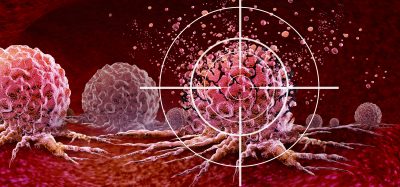Llama nanobodies could serve as new treatment for HCMV
Posted: 26 July 2021 | Anna Begley (Drug Target Review) | No comments yet
Scientists have developed a “llama nanobody” that is capable of chasing out human cytomegalovirus (HCMV) so it is detected by the immune system.


A team of scientists at Cambridge University, UK, and Vrije Universiteit Amsterdam, Netherlands, have developed a small fragment of a llama antibody, a “llama nanobody”, that could chase out human cytomegalovirus (HCMV) as it hides away from the immune system. This would then enable immune cells to seek out and destroy the virus.
HCMV usually hides in blood cells where it can remain undetected. While this does not often cause symptoms, it can be devastating for people who are immunocompromised. Furthermore, there is currently no effective vaccine against HCMV and antiviral drugs often proven ineffective or have very serious side effects.
The team therefore investigated a way to chase the virus from its hiding place using nanobodies. “As the name suggests, nanobodies are much smaller than regular antibodies, which make them perfectly suited for particular types of antigens and relatively easy to manufacture and adjust. That is why they are being hailed as having the potential to revolutionise antibody therapies,” explained Dr Timo De Groof.
The researchers developed nanobodies that target a specific protein, known as US28, that is one of the few elements detectable of the surface of a HCMV latently infected cell. In laboratory experiments using blood infected with the virus, the team showed that the nanobody binds to the US28 protein and interrupts the signals established through the protein that help keep the virus in its dormant state. Once this control is broken, the local immune cells are able to detect the infection, enabling them to find and kill the virus.
Dr Elizabeth Elder, joint first author, said: “The beauty of this approach is that it reactivates the virus just enough to make it visible to the immune system, but not enough for it to do what the virus normally does, replicating and spreading.”
“We believe our approach could lead to a much-needed new type of treatment for reducing, and potentially even preventing, HCMV infections in patients eligible for organ and stem cells transplants,” concluded Professor Martine Smit.
The study was published in Nature Communications.
Related topics
Antibodies, Drug Discovery, Drug Leads, Immunology, Immunotherapy, Nanomedicine, Therapeutics
Related conditions
human cytomegalovirus (HCMV)
Related organisations
Cambridge University, Vrije Universiteit Amsterdam
Related people
Dr Elizabeth Elder, Dr Timo De Groof, Professor Martine Smit








